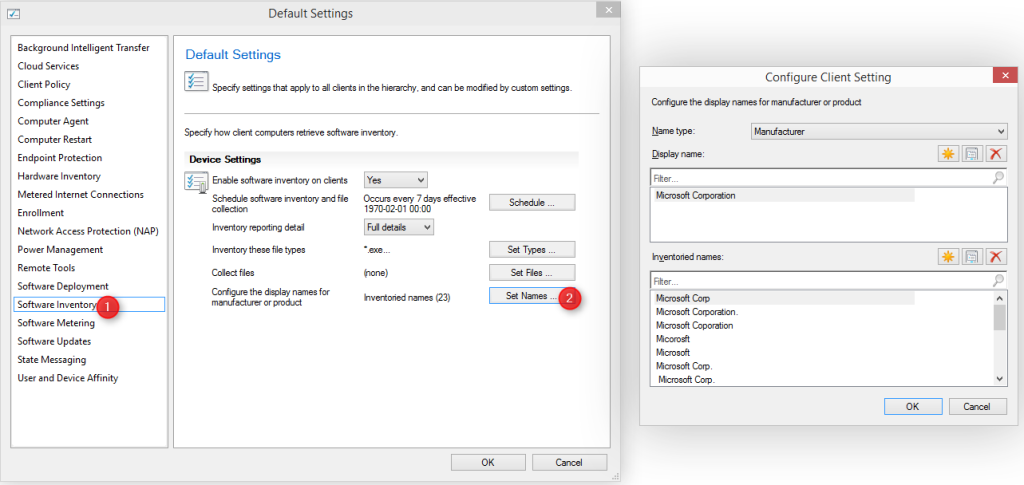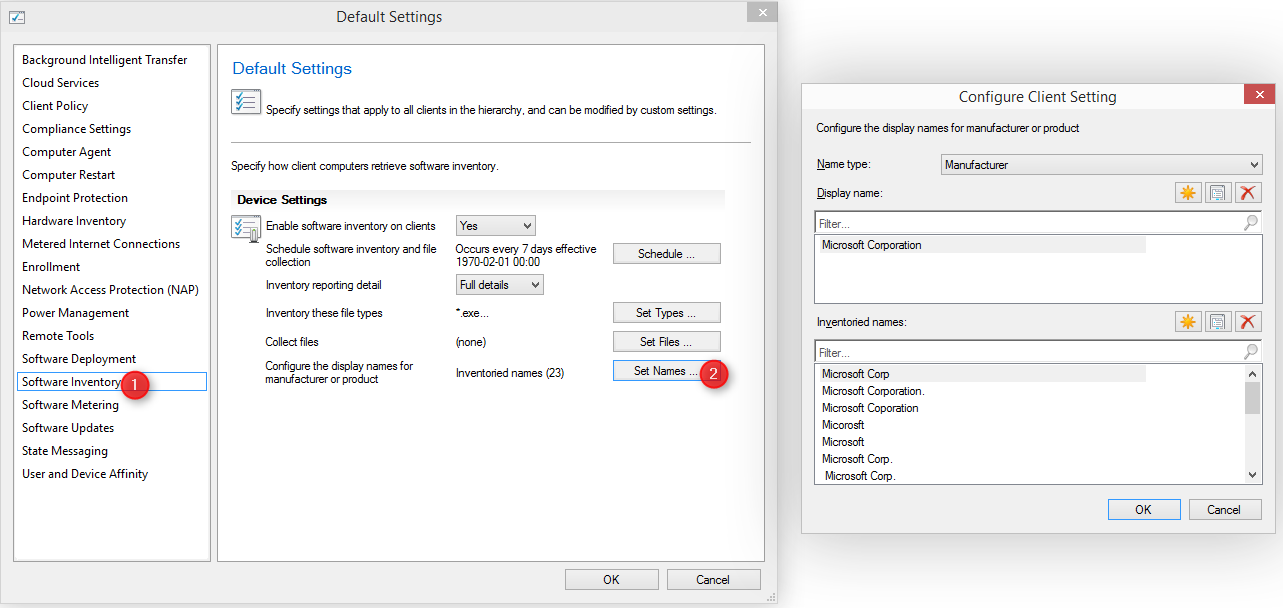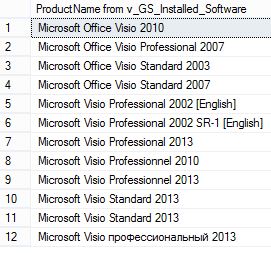

Did you ever need to analyze the installed software in your business? For those who experimented with it, you know that it’s not an easy task. In SCCM, one of the ways to achieve this goal is by using Add Remove Programs but you’ll have to deal with a minimum of customization.
The problem is that software companies don’t work in the same direction and not even standardize their own product, Adobe and Microsoft included.
You can experiment with issues where publisher or product names are different on the same product. You can even have the same executable file version for two different products. This explains why you see discrepancies with the SCCM inventories mechanism.
- Hardware Inventory (Add Remove Program, Installed Software)
- Software Inventory (File Inventory)
- Software Metering
Technet warned the reader when they talk about software inventory in client settings :
Because these names are not always standardized in the file header information, when you view software inventory information in Resource Explorer or run queries, different versions of the same manufacturer or product name can sometimes appear. If you want to standardize these display names…
There’s an option for software inventory in client settings where you can configure display names for manufacturers or products that help you standardize some discrepancies.
Click on Administration / Client Settings / Software Inventory and Set Names to list the inventoried names.
The problem is that it affects only software inventory which doesn’t include Add Remove Programs.
There’s no solution if you want to modify the value of data reported in Add Remove Programs. Creating software reports in SCCM becomes difficult if you constantly need to deal with exclusions to create data quality.
During the creation of the report Asset – Installed Software, we analyzed the Installed Software WMI class and concluded that a product like Microsoft Visio gives us a lot of trouble.
As an example, querying Visio gives this result :
[pastacode lang=”sql” message=”” highlight=”” provider=”manual” manual=”SELECT%20DISTINCT%20ProductName0%20AS%20’ProductName%20from%20v_GS_Installed_Software’%0AFROM%20v_GS_INSTALLED_SOFTWARE%0AWHERE%20ProductName0%20LIKE%20’%25%20Visio%20%25’%20AND%20ProductName0%20NOT%20LIKE%20’%25%20MUI%20%25’%20AND%20ProductName0%20NOT%20LIKE%20’%25Language%20Pack%25’%20AND%20ProductName0%20NOT%20LIKE%20’%25Viewer%25’%20AND%20ProductName0%20NOT%20LIKE%20’%25Services%20Web%25’%20AND%20ProductName0%20NOT%20LIKE%20’%25Compatibili%25’%20AND%20ProductName0%20NOT%20LIKE%20’%25Modeler%25’%20AND%20ProductName0%20NOT%20LIKE%20’%25SDK%25’%0AORDER%20BY%201″/]
- What is the difference between Microsoft Office Visio and Microsoft Visio?
- Why Microsoft Visio Standard 2013 is there twice?
This explains why there’s a company like Flexera or Provance that helps the community to have the best results in your Asset Management inventory. What are the possible solutions if an enterprise does not want to invest in third-party applications?
A good starting point would be to use Asset Intelligence in SCCM. You have the ability to manipulate and standardize each software detail by using a total of 5 custom labels. It’s enough to create something really clean and organized.
In the next blog post, we will show you how to use those 5 custom labels in SCCM Asset Intelligence so you can customize your own structure.
Asset Intelligence Blog Series
- Part 1 | Why should you use Asset Intelligence in SCCM 2012
- Part 2 | How to maximize the use of Asset Intelligence with Labels
- Part 3 | Create Custom Reports with Labels of Asset Intelligence
- Part 4 | Merging Last Usage of Software Metering with Custom Labels of Asset Intelligence
- Part 5 | Automatically Uninstall Unused Applications based on Software Metering with SCCM



















Kelly Lawson
01.23.2020 AT 02:46 PMPatrick de Moines
04.18.2016 AT 12:59 PMRichard Bishop
02.01.2018 AT 02:59 PMJohn Phillips
03.20.2015 AT 10:02 PMNicolas Pilon
03.21.2015 AT 07:37 AM